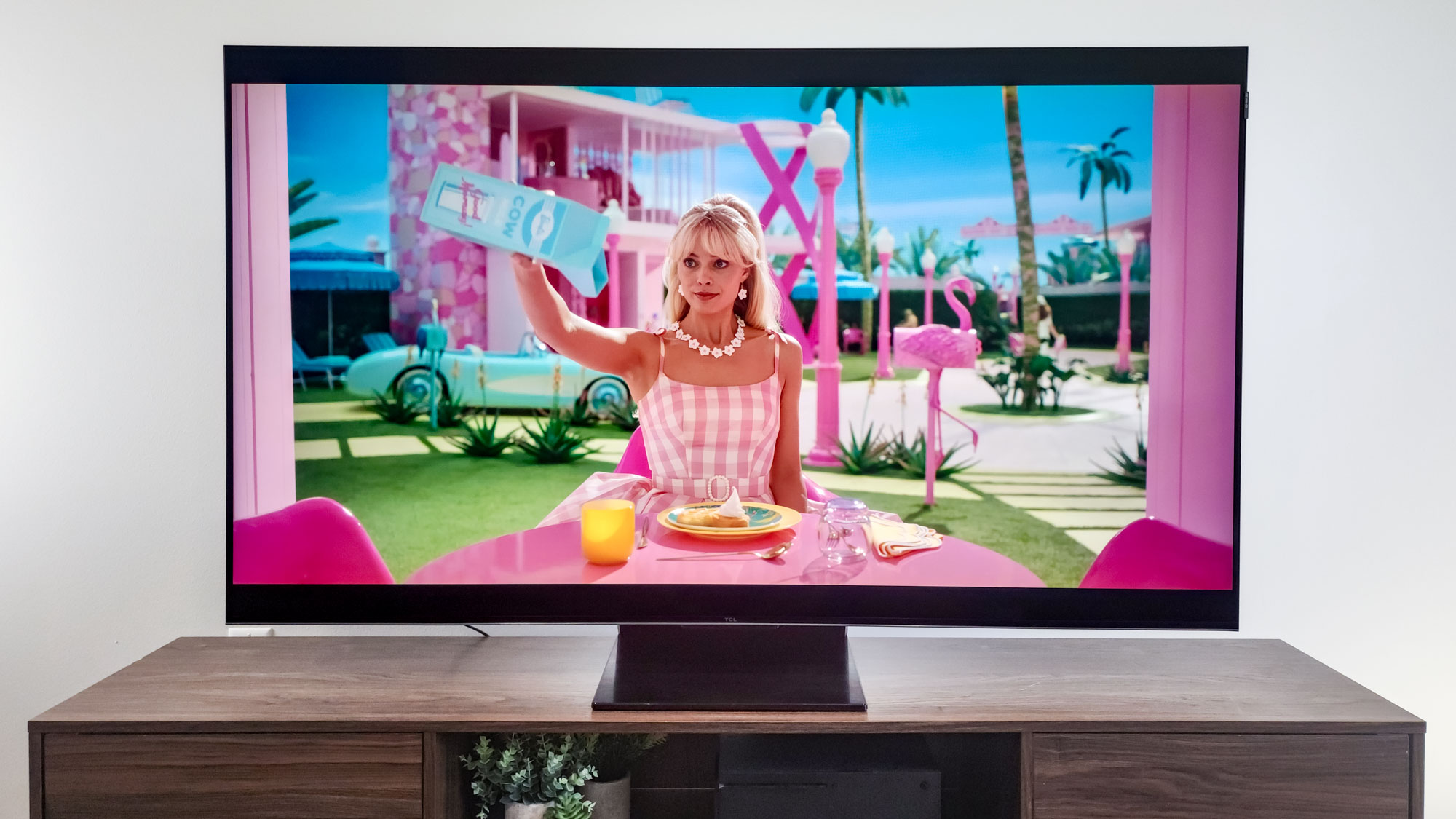
Price: $1,499.99
Screen size: 65 inches
Model: 65QM751G
Resolution: 3,840x2,160
HDR: Dolby Vision, HDR10, HDR10+, HLG
Refresh Rate: 144Hz
Ports: 2 HDMI 2.1, 2 HDMI 2.0, 2 USB
Audio: 50W
Smart TV Software: Google TV
Size (without stand): 56.9x32.9x2.8 inches
Weight (without stand): 45.9 pounds
The TCL QM7, one of many TVs currently on the market that fuses quantum dots with Mini-LEDs to maximize both color and brightness, wouldn’t be a terrible deal at its list price of $1,499.99. But its regular, steep price reductions — as of this writing, you can find screen sizes up to 75 inches for less than $1,000 — make it a truly killer bargain.
It might not be the brightest or most color-accurate TV you can find, but at those low prices, and with its attractive array of offerings (the Google TV operating system, a good collection of features, and a fine remote control), the TCL QM7 has very little to complain about. Regardless of whether it’s one of the best TVs you can buy, it’s unquestionably one of the best TV values you can find.
TCL QM7 TV review: Pricing and availability
The QM7 is the slightly lower-tier QD-Mini LED TV in TCL’s lineup, just below the QM8. Although the QM7 is not available in the same towering maximum size (115 inches) as the QM8, it nonetheless offers a range of sizes to match every budget and living room:
- TCL 55QM751G (55-inch): $1,099.99 | Sale: $499.99
- TCL 65QM751G (65-inch): $1,499.99 | Sale: $699.99
- TCL 75QM751G (75-inch): $1,999.99 | Sale: $999.99
- TCL 85QM751G (85-inch): $2,699.99 | Sale: $1,499.99
- TCL 98QM751G (98-inch): $4,999.99 | Sale: $1,999.99
Though the list prices themselves are hardly high, chances are you will rarely pay them — the QM7 is frequently on sale, and thus easy to find for at least a few hundred dollars cheaper (and frequently more than that).
We evaluated the 65-inch QM7, though we expect performance to be comparable at every other size. The only significant difference between models is the number of dimming zones (up to 1,500) and the slightly different stand design on the 98-inch TV.
TCL QM7 TV review: Design and ports
Quiet elegance is the name of the game with the QM7’s design, as represented by a brushed-metal strip around the edges of the screen; the sleek, center-mounted stand (though you can also wall-mount the TV using the 300x300mm VESA holes); and the many squares that adorn the black plastic rear panel, where you won’t find much else except the round subwoofer for the speaker system. You can access standby, channel, volume, and input functions from a button located under the TCL logo in the center of the bottom edge.
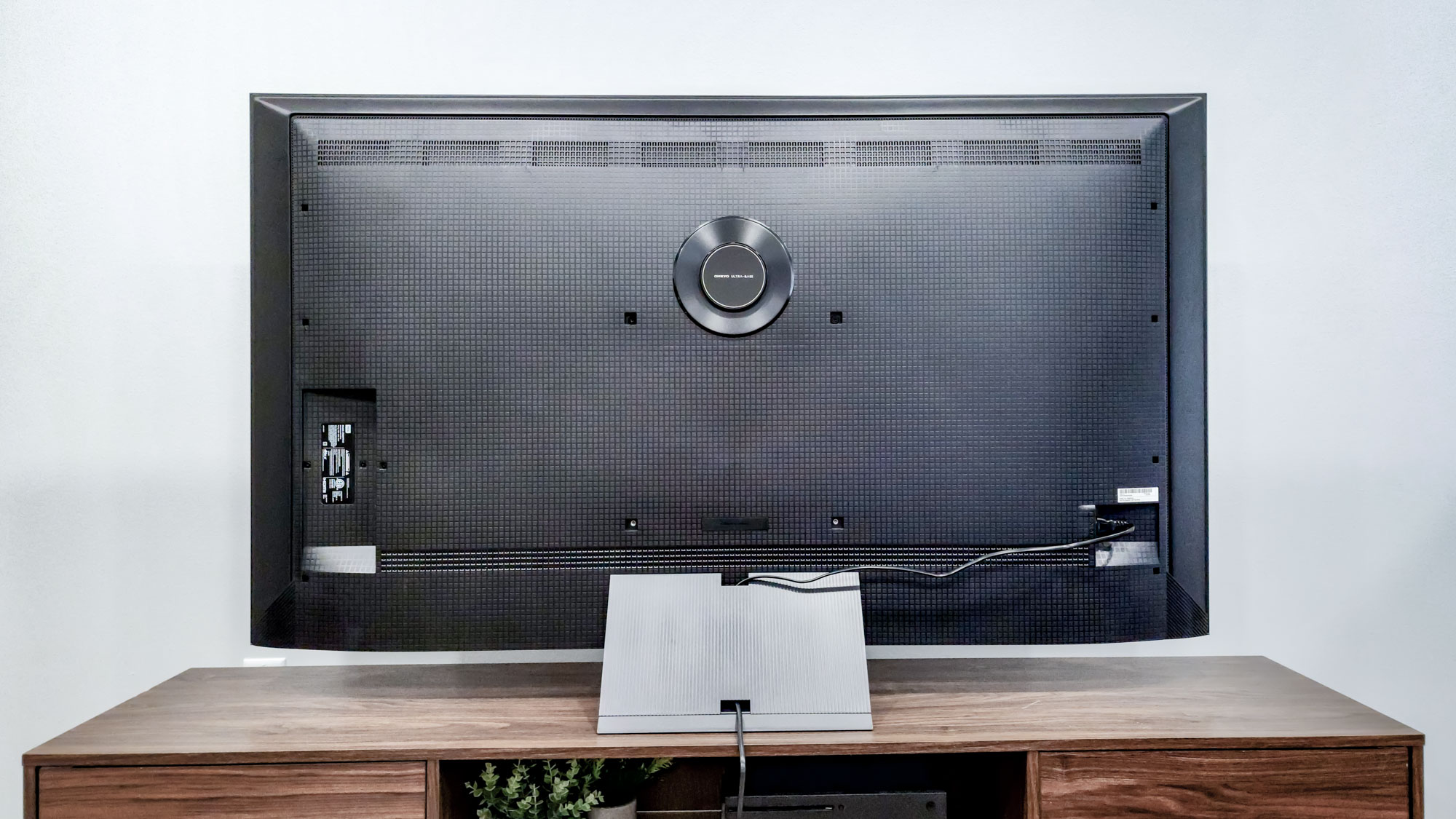
Ports angle off the right side, and include two USB, Ethernet, coaxial cable, AV in, headphones, and S/PDIF optical audio out, in addition to four HDMI ports. Of these, two are HDMI 2.0 ports limited to a 60Hz refresh rate (with one of these carrying eARC), and two are HDMI 2.1, with one at 120Hz and one at 144Hz. It’s a good selection, with the last two particularly well suited for gaming, though it’s increasingly common to see all HDMI ports on even less expensive TVs, so that would have been nice here.

Bucking the overall industry trend of smaller, thinner remotes, the QM7’s is a bit old fashioned in its length (just under 8.5 inches), but it satisfies in terms of spare functionality.
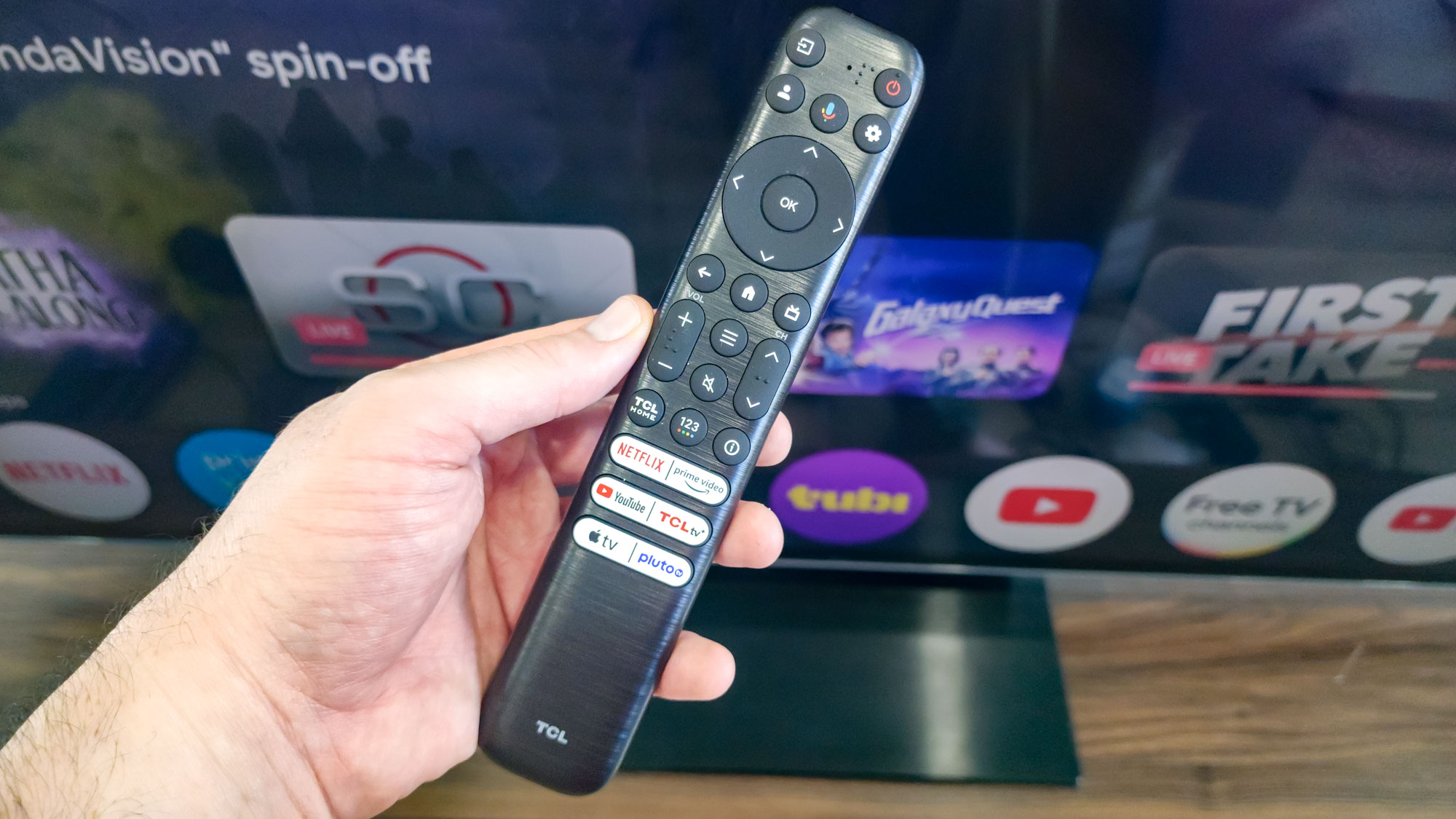
Its basic controls and its shortcut buttons (for Netflix, Amazon Prime Video, YouTube, TCL TV, Apple TV, and Pluto TV) are well arranged geometrically and leave plenty of space at the bottom. They also have a gentle, white backlight that activates when you either push a button or pick up the remote and angle it toward you.
TCL QM7 TV review: How we test
We follow a standard testing protocol for every TV we review at Tom’s Guide. Our benchmarks include a series of technical and subject tests designed to rate the set’s performance. For our technical tests, we use a Jeti spectraval 1501-HiRes spectroradiometer, a Klein K10-A colorimeter, a Murideo 8K-SIX-G Metal pattern generator, and Portrait Displays’ Calman TV-calibration software to take measurements. We also use a Leo Bodnar 4K Input Lag Tester for determining the TV’s gaming prowess.
Subjective tests vary based on the reviewer, but usually feature anecdotes from a diverse selection of movies, TV shows, and other content reflecting the types of things you may actually want to watch on the TV. For a more detailed look at what we do and how we do it, check out our “How we test TVs” page.
TCL QM7 TV review: Test results and performance
Over the past couple of years, we’ve seen a number of lower-price TVs really deliver in terms of picture performance, and you can add the QM7 to that list. It’s capable of getting quite bright with other TVs in its price range, both with SDR and HDR content (836 and 1,732 nits, respectively, in Movie mode) and delivers impressively accurate color (we measured a Delta-E of 1.95, again in Movie mode), with solid if not quite category-leading coverage of the Rec. 709 and UHDA-P3 color gamuts.
The set proved solid at action processing, crisply rendering the exciting Italian car-chase scene in Mission: Impossible—Dead Reckoning and other high-octane moments in Dune: Part Two and Avatar: The Way of Water. The Super Mario Bros. Movie and Spider-Man: Across the Spider-Verse, both intensely colorful animated films, popped off the screen.
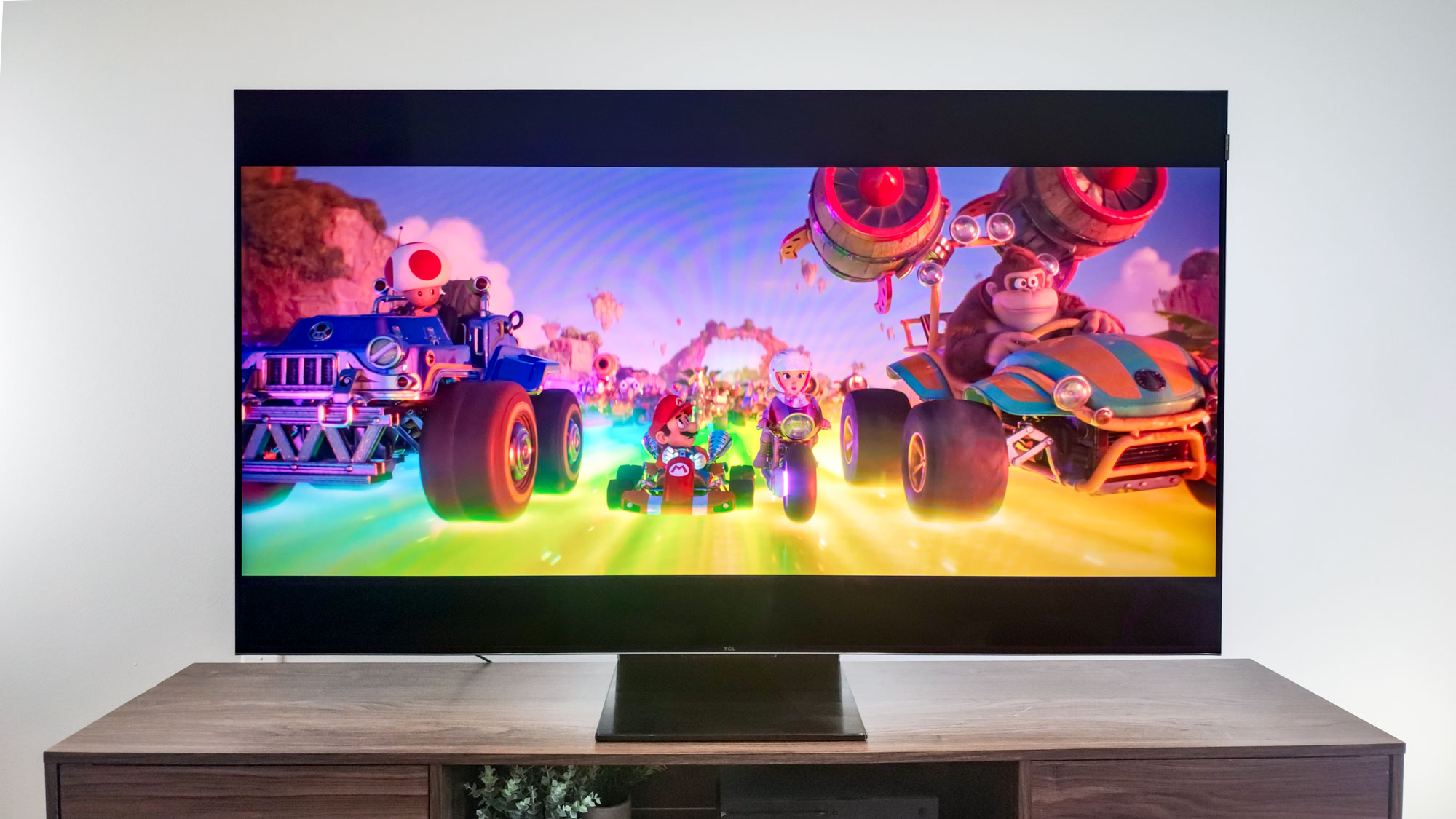
Upscaling was somewhat weaker, however, with various high-detail shots from Mission: Impossible—Fallout looking muddier than ideal on the QM7. And you may not want to stray too far from the center of the screen, as color loses vibrancy and definition fairly quickly. But when viewed straight on, there’s not a lot to complain about with regards to the picture, though the audio, which can get acceptably loud, is weak on bass and distorts treble even at middle volume levels.
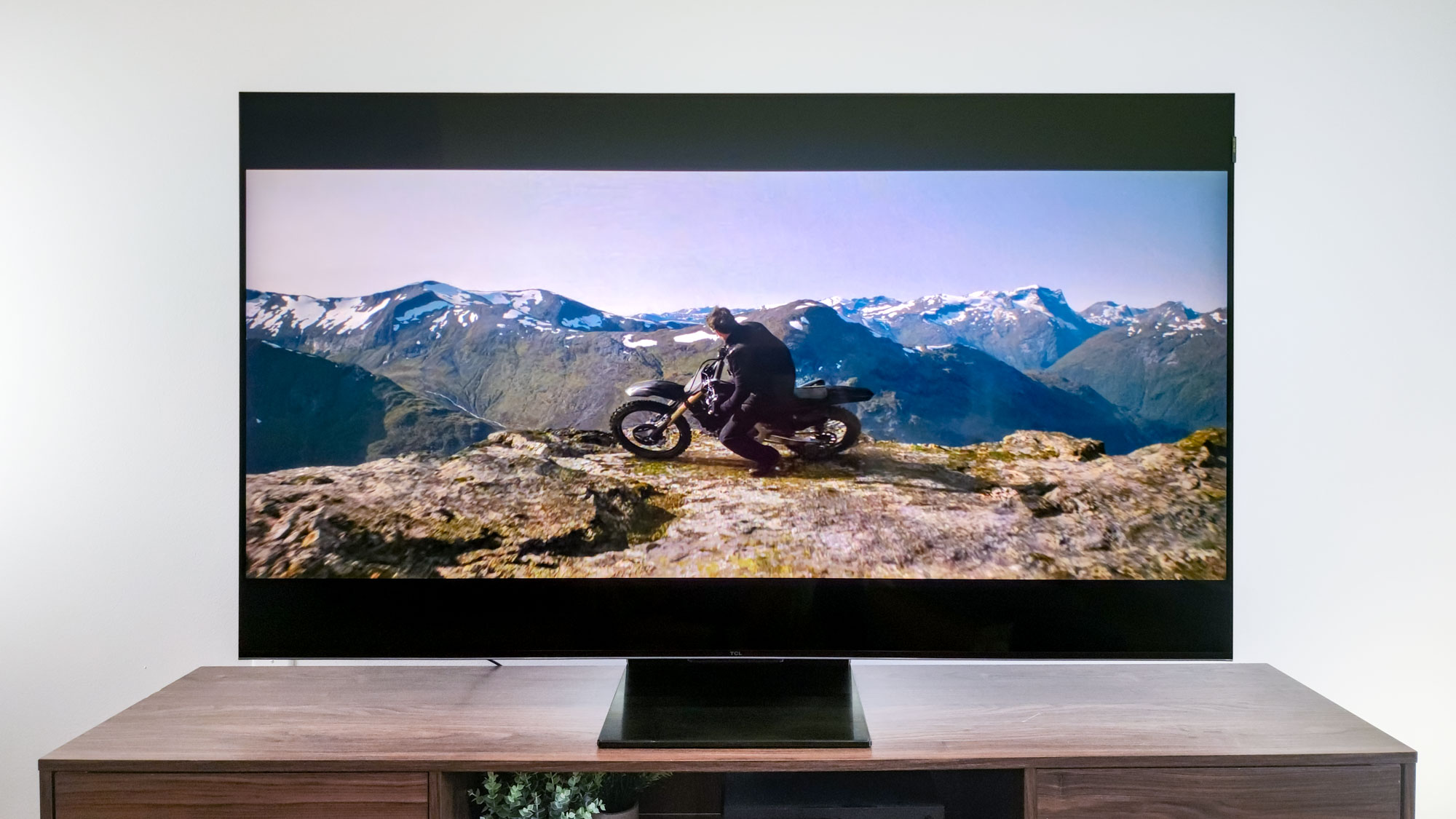
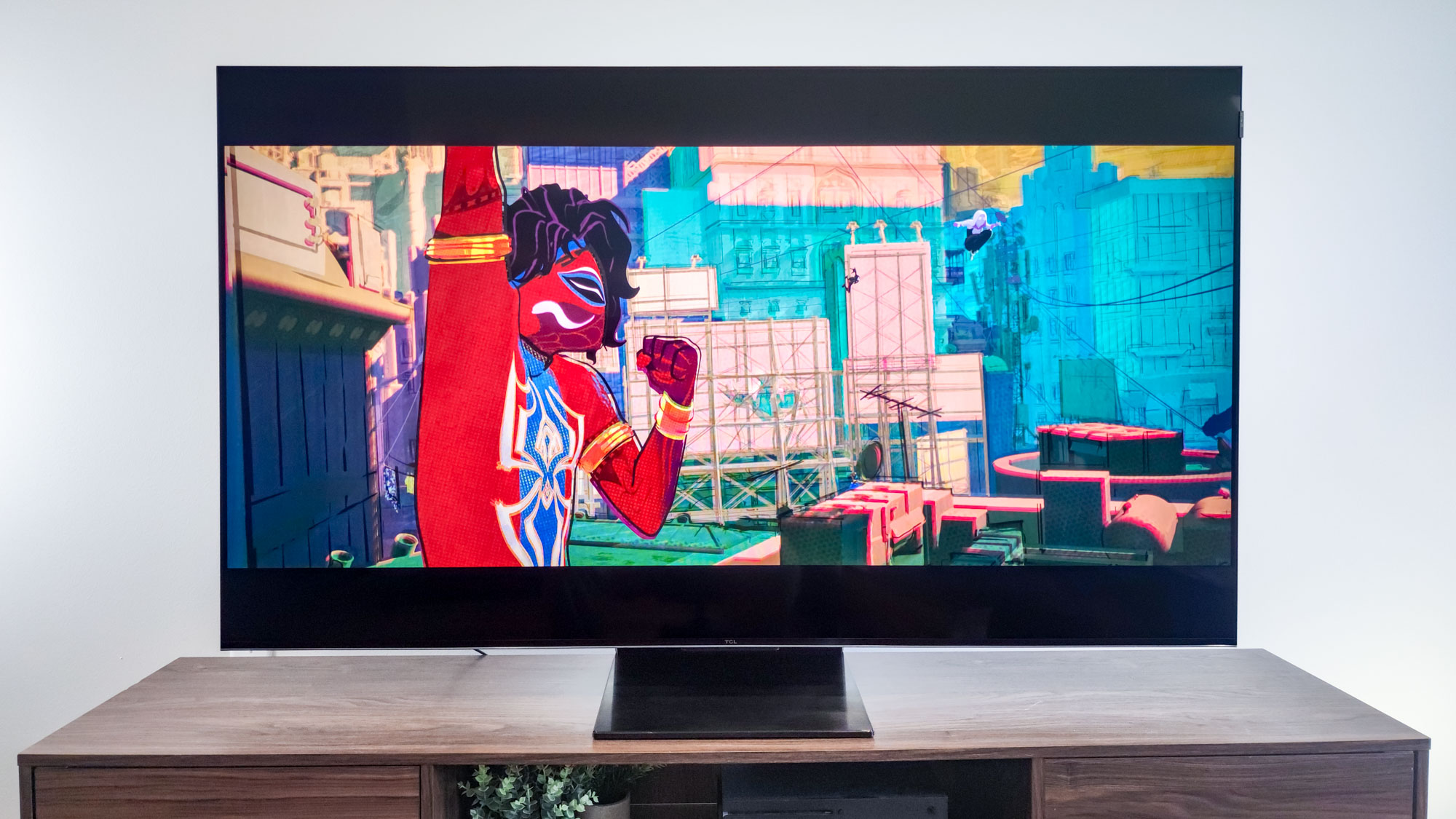
With input lag of 13.2ms, as measured with our Leo Bodnar 4K Input Lag Tester, the QM7 is good but not extraordinary. We set a threshold of 10ms for great gaming performance, and even lower-end TVs (such as from Samsung) are capable of meeting it, but we didn’t discern any serious problems while testing out the Bethesda open-universe title Starfield. With a Game Master mode that unlocks a variety of different connection and picture settings to optimize play, as well as an on-screen game bar for changing key settings on the fly, the QM7 shows that TCL is keeping up with LG, Samsung, and Sony in this regard.
TCL QM7 TV review: Smart features
The QM7 is equipped with the powerful Google TV operating system, which turns your TV into an extension of the Google Search features you are probably already using on other devices. This makes it easy to both find new things to watch and to access items you may have encountered elsewhere. With its easily navigable home screen, which lets you flip quickly between live TV, apps, your content library, and TCL’s own content, and which easily surfaces other things you’ve been watching alongside popular movies, shows, news, and selections from your apps (such as YouTube), Google TV only seems to be getting better with time.
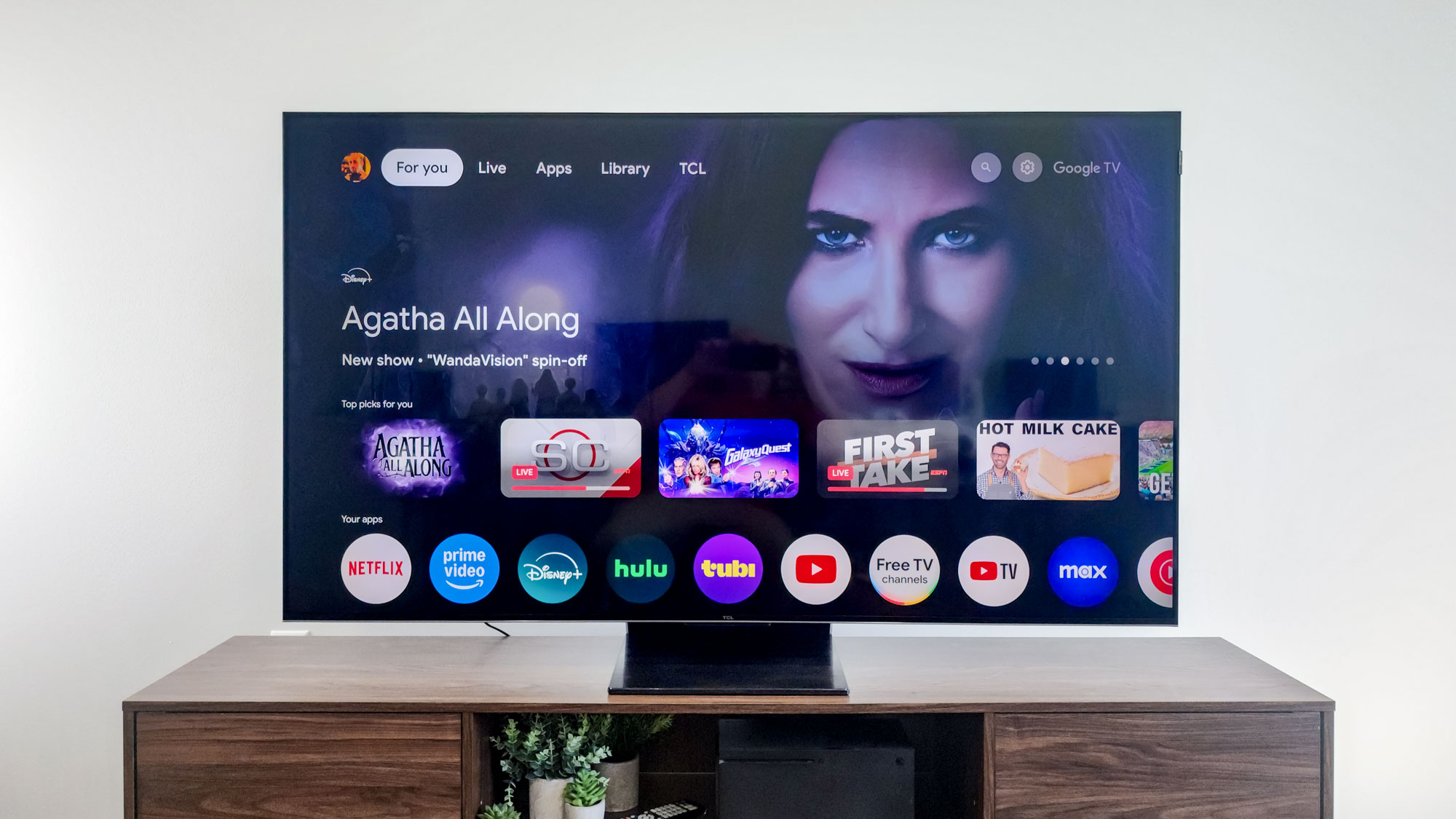
There are also plenty of streaming options, from the built-in Google Chromecast to Apple AirPlay 2, as well as smart home integration with Google Assistant (of course), Amazon Alexa, and Apple HomeKit. Its tuner, however, is ATSC 1.0, which means you won’t have access to over-the-air 4K broadcasts the way you do with ATSC 3.0 (which is somewhat rare in the current generation of TVs).
Although it doesn’t quite qualify as a budget TV, the TCL QM7 is priced very well for what it delivers, including the highest brightness in its category and very good color handling. It would be nice for it to have an ATSC 3.0 tuner (which you’ll find on the Sony Bravia 7) and more HDMI 2.1 ports (which you won’t). But if you can live without those things and slightly more advanced picture-processing capabilities like upscaling, it’s tough to beat the TCL QM7 if you can find it at its eye-poppingly low sale price.







